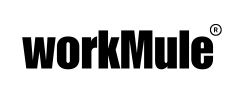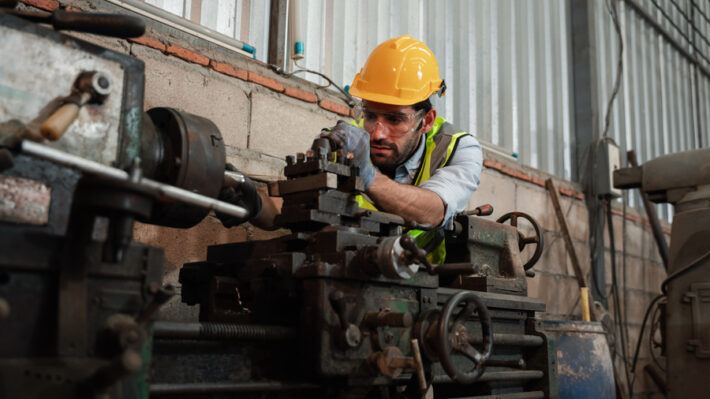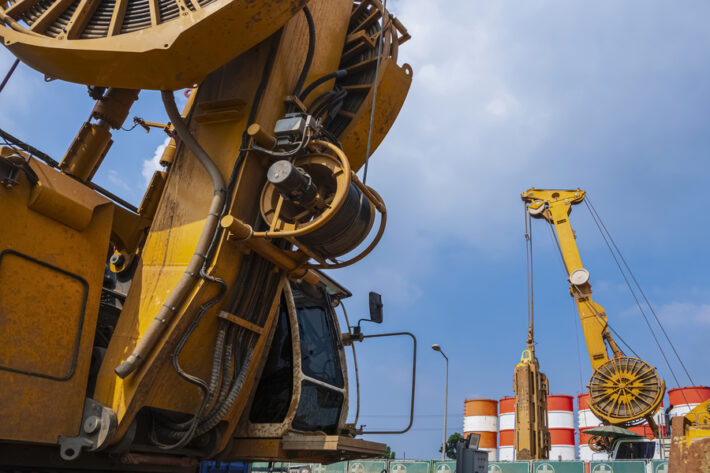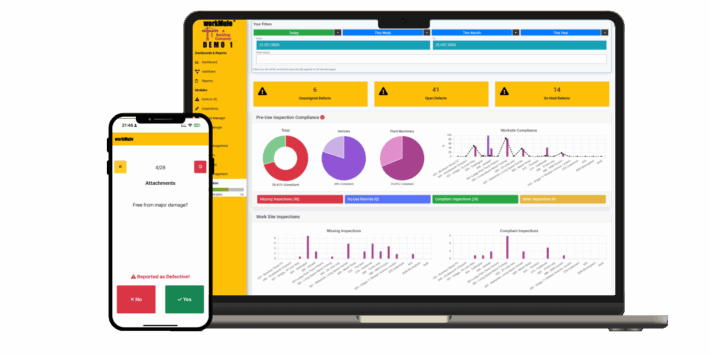LOLER Inspections: Ensuring Safe Lifting Equipment on Site

Safety and Risk: Why LOLER Inspections Matter
On any construction site, lifting equipment—from cranes and hoists to telehandlers and lifting accessories—plays a critical role in day-to-day operations. But when inspections are missed or poorly documented, the consequences can be serious. The Lifting Operations and Lifting Equipment Regulations (LOLER) 1998 exist to ensure all lifting equipment is strong, stable, and safe for use.
LOLER inspections aren’t just a box-ticking exercise. They’re a legal requirement under UK law and a vital step in protecting both site workers and company reputation. With heavy plant and machinery often operating under high stress, regular checks are the difference between smooth operations and costly downtime. Beyond the immediate safety benefits, thorough LOLER compliance can also reduce insurance premiums, prevent regulatory fines, protect against enforcement action, and improve overall site efficiency by preventing unexpected equipment failures.
What a LOLER Inspection Involves
A LOLER inspection typically covers two key areas:
- Pre-use inspections — carried out daily by the operator to confirm the equipment’s visual and functional safety.
- Thorough examinations — conducted at set intervals by a competent person to ensure compliance with LOLER and Health and Safety Executive (HSE) standards.
Typical checks include:
- Structural integrity, including signs of cracks, deformation, or corrosion
- Function tests for brakes, limit switches, and emergency stops
- Verification of load limits, identification markings, and certificates
- Inspection of lifting accessories like chains, slings, and hooks
- Recording and reporting of any defects
When done on paper, these inspections often get lost in the shuffle. That’s why many firms are now switching to digital inspection checklists, ensuring every inspection is traceable, instantly accessible across teams, and fully auditable for compliance purposes.

The Digital Advantage Over Paper
Digital inspections transform how construction teams handle compliance. Platforms like workMule replace paper with cloud-based inspection tools that eliminate manual errors, delays, and data loss.
- No missing records: Every inspection is time-stamped and securely stored, ready for audits at any moment.
- Instant fault reporting: When a defect is logged, maintenance teams are notified immediately to prevent unsafe operation.
- Standardised checklists: Mandatory fields and smart logic ensure nothing is missed.
- Audit-ready history: Regulatory inspections become faster, cleaner, and fully transparent.
This digital shift is helping construction companies modernise how they manage lifting operations and equipment safety across multiple sites, even in challenging or remote locations.
How workMule Supports LOLER Compliance
workMule is built specifically for the construction and plant hire industries, helping teams complete LOLER and PUWER inspections digitally and keep every record organised. The platform combines smart workflows with on-site practicality:
- Customisable checklists for cranes, MEWPs, telehandlers, and more
- Offline functionality for remote or low-signal sites
- QR code scanning to access the correct inspection instantly
- Real-time fault tracking and escalation
- Secure storage of certificates and inspection histories
- Role-based permissions for operators and supervisors
- Integration with existing maintenance or asset management systems
By combining pre-use inspections and thorough examinations in one connected system, construction managers can oversee compliance across multiple sites without the paperwork burden. The Plant Inspections section of the workMule platform allows teams to create and manage daily plant checks in seconds, keeping all inspection data in one place. workMule also supports custom integrations with popular field tools and systems for seamless data sharing.
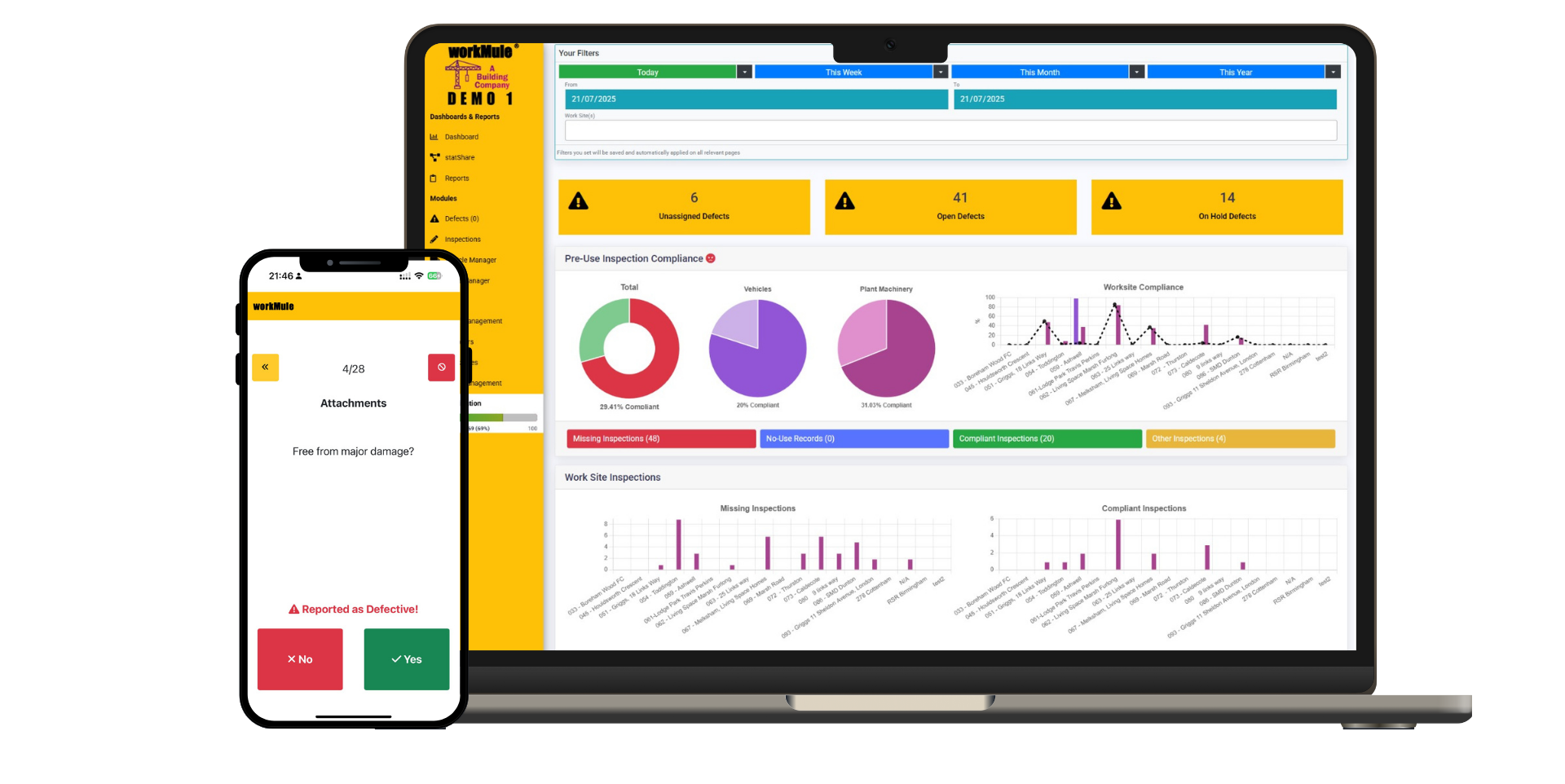
Best Practice for Rolling Out Digital LOLER Inspections
To get the most from a digital inspection platform, construction firms should:
- Train operators on the purpose behind each LOLER check, not just how to fill out the form.
- Use automated scheduling to ensure inspections are never missed.
- Review inspection data regularly to identify recurring faults or weak points.
- Connect defect reports directly to maintenance workflows.
- Use reporting dashboards to track inspection completion rates and overdue checks.
This creates a proactive safety culture—where compliance becomes part of everyday operations rather than a reactive process.
Tangible Benefits for Construction Teams
Implementing digital LOLER inspections delivers measurable outcomes:
- Safer sites and fewer lifting-related incidents
- Reduced downtime from faster fault resolution
- Centralised compliance records for audits
- Improved accountability across all operators
- Data-driven maintenance and asset planning
With every lift logged, verified, and traceable, site managers can spend less time chasing paperwork and more time managing productivity and overall site safety.
Conclusion: Future-Proofing LOLER Compliance
LOLER regulations are here to stay—but how companies manage them is changing fast. Paper forms once made compliance cumbersome; now, digital tools like workMule make it effortless.
By embedding LOLER inspections directly into your daily operations, you create a safer, more efficient site where every lift is backed by data.
👉 Book a demo today to see how workMule can help your team digitise LOLER inspections and simplify compliance across your fleet.
